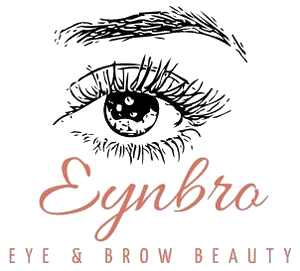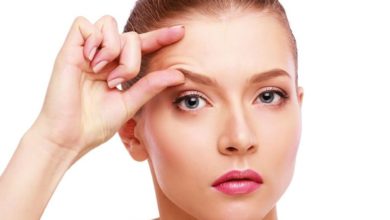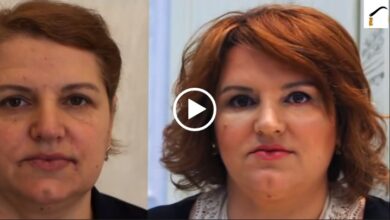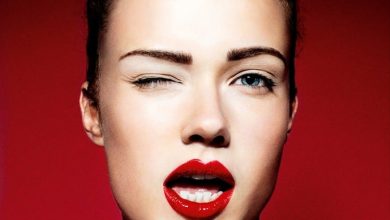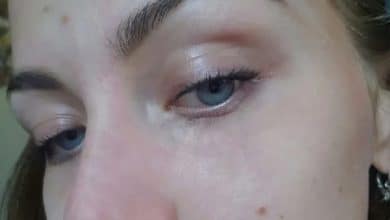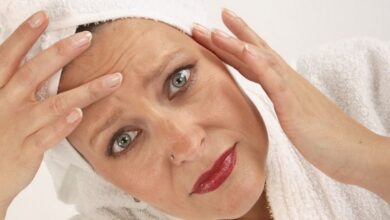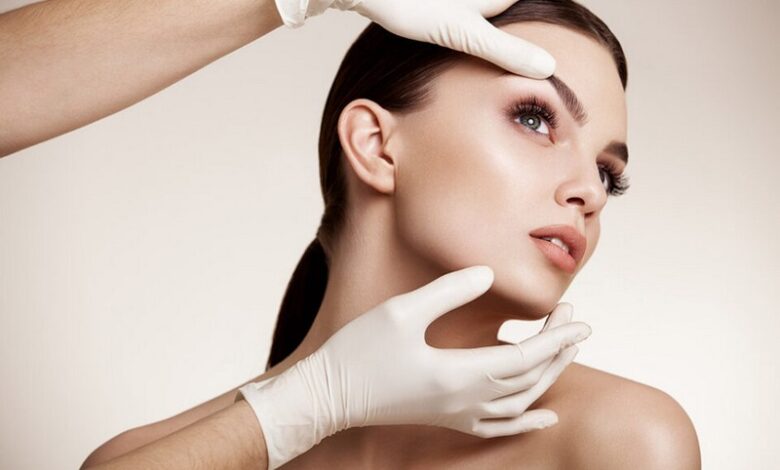
Every woman dreams of a beautiful and smooth facial skin, without a single wrinkle. It is on the forehead that wrinkles first appear, making the face look tired or even grumpy. A forehead and brow lift (lifting) can help correct this problem. Thanks to this procedure, the face becomes younger, the shape of the eyes changes, wrinkles and deep creases disappear.
Indications
Forehead lift and brow lift is relevant for patients over the age of 40, as well as in the presence of congenital aesthetic defects.
Immediate indications for its performance are:
• Deep wrinkles and folds, skin laxity in the forehead and bridge of the nose.
• Lowering of the outer corners of the eyes, soft tissues of the upper third of the face, and skin on the bridge of the nose.
• Ptosis of the upper eyelid.
• Numerous eye wrinkles (crow’s feet).
• Hanging eyebrows (due to their low position).
Depending on the type and severity of the problem, a specialist selects a specific method of dealing with it. At the moment several types of surgical interventions are practiced: hardware and injection treatment, and thread lifting.

The following procedures fall into this category:
• Biorevitalization. It is an injection of hyaluronic acid that restores the water balance of the skin. They help to moisturize and slow down age-related changes.
• Mesotherapy. It is an injection of multi-component compositions with the purpose of nourishing, moisturizing and increasing local immunity of the skin. They strengthen the skin’s tone and slow down the development of ptosis.
• Botox. Intramuscular injections of botulinum toxin type A, contributing to the elimination of folds and wrinkles, as well as moderate ptosis. The principle of action is based on temporary paralysis of the muscles responsible for contraction of the forehead skin.
• Apparatus massages. Most often practiced with the help of vacuum or ultrasound. The purpose of this impact is to increase blood circulation, lymph flow, supply of cells with useful substances and oxygen. Positive changes lie in the optimization of internal processes, which provoke fibroblasts for accelerated synthesis of collagen and increase the elasticity of the skin.
• Light treatment. This direction includes procedures such as laser peels, fractional thermolysis and photorejuvenation. They differ in wavelength and type of radiation, the size of the covered area, but the principle of action is almost the same. The emitted light is absorbed by the skin, transformed into heat, which stimulates the increase in collagen, responsible for skin tone and elasticity.
• Radio-wave exposure. The procedure called thermage is based on safe radio-wave radiation. It is able to penetrate the soft tissues without compromising their integrity and thicken collagen fibers, thereby increasing the elasticity of the skin and stimulating the formation of a tightening effect.
All such procedures are carried out as a course, characterized by a short rehabilitation period and minimal complications, the effect of their implementation is expressed poorly and is not able to eliminate severe forehead ptosis. Before they are carried out, you should consider the individual contraindications to each method of exposure. For example, hardware techniques are prohibited in the presence of implanted pacemakers.
The cost of injections and hardware massage ranges from $50 to $90 per hour with most spending, professional procedures based on laser or radio waves are two to three times more expensive.
Thread lifting
Forehead lift and brow lift with threads belongs to the category of non surgical interventions, but require a separate, more detailed coverage. The essence of the procedure is to implant special implants in the form of threads under the skin. They help stretch the skin and fix it in a new position, providing forehead lift and brow lift.
The procedure takes 30-40 minutes and is performed under local anesthesia. Positive changes are achieved not only due to the physical presence of the threads, in the place where they are formed reinforced collagen compounds, which also prevent ptosis. They persist for 1-3 years.
Modern cosmetology uses several types of threads, but most often they are qualified by the type of resorbable (made of synthetic materials, completely disintegrating into its components) or non-resorbable (remaining in the soft tissues permanently and requiring periodic tightening).
Brow lift and forehead lift is estimated at about 4000 dollar, the exact cost is determined by the amount and type of material used. The list of contraindications is standard, including pregnancy, tendency to form keloid scars, and abnormalities of the circulatory system.
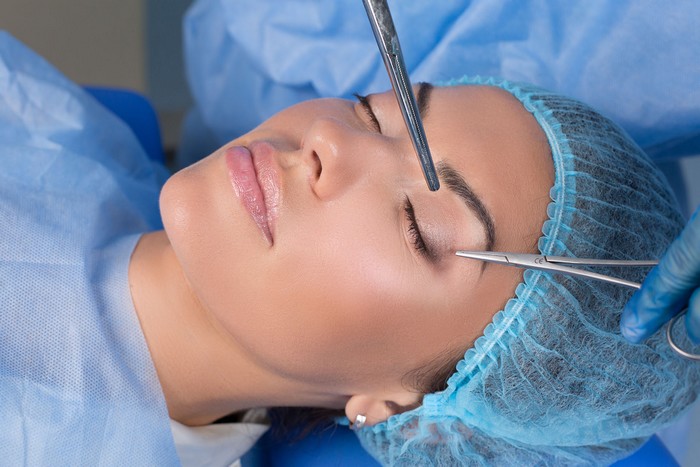
Surgical intervention: forehead lift
Forehead lift and brow lift by means of surgery is performed in cases of pronounced age-related changes and aesthetic defects. The specific method of its implementation is determined by the individual characteristics of the patient’s body, as well as his personal wishes.
The most common types of forehead lift surgery are:
1-Lifting eyebrows and forehead with endotins
The incisions in this case are made according to the classical scheme, through them special plates made of synthetic, biodegradable materials are inserted into the soft tissues. They fix the skin and promote the increased production of collagen in the place of their implantation. After about six months, the endotinous plates are completely dissolved and removed from the body, but in their place is already formed a natural framework of collagen, contributing to the desired lifting effect.
2-Coronarl Lift
The second name is open brow lift, it is recommended for elderly patients as the most radical method of treatment in case of pronounced appearance defects. It is performed under general anesthesia and is often accompanied by complications.
The incision can be performed in one of three ways:
• Standard. It has a zigzag shape, is performed behind the hairline (about 8 centimeters) and extends from the forehead to the auricle in two directions. In the course of the operation, excess skin is excised, tension is applied and the skin is fixed.
• Modified. Starts at the temporal zone, curving closer to the first hairline in the center of the forehead, and returns to the temple again, but from the other side. Such a method is suitable for those who wanted to reduce the width of the forehead. A similar effect is achieved by omitting the hair growth.
• Along the marginal line of hair growth. The optimal solution for patients with a high forehead and bald spots. An excessive amount of skin no more than 2 centimetres wide is dissected. When choosing this method, you should consider the possible risks (disturbance of facial proportions, high trauma, disruption of hair growth).
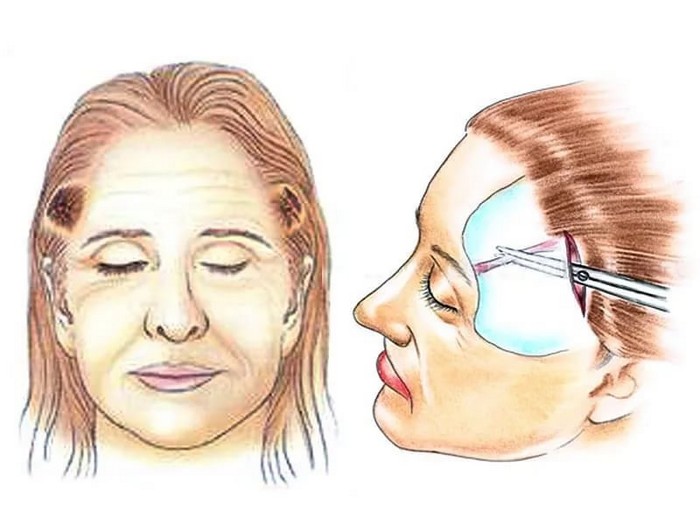
3-Endoscopic brow lift
A universal technique, relevant to patients of all age groups. It is performed under general anesthesia. A distinctive feature of this type of plastic surgery is a pronounced, but short-lived effect of the lift, surgical recovery and minimal complications.
Lift brow and forehead in this way is considered sparing. The incisions are no more than two centimeters long, heal quickly and leave no trace. They are made in the temporal and frontal areas, near the hairline. Special endoscopic instruments are inserted deep into the soft tissues. They separate the muscles whose contraction leads to the formation of longitudinal wrinkles and correct the height of the eyebrows.
Surgical intervention: brow lift
The surgical brow lift can also be performed separately from the forehead.
There are three main ways to perform it:
• Temporal lift. Incisions are made in the temple area, and excess skin is excised there. The operation is minimally traumatic and is performed not only under general anesthesia, but also under local anesthesia. Healing is quick, and the intervention is hardly noticeable.
• Brow lift with an incision under the brow. Recommended for elderly patients and rarely used. After its performance traces of intervention are visually noticeable.
• Transpalberal brow lift. The incision in this case is made in the upper eyelid and is hardly noticeable after the healing. The intervention is done under general anesthesia and involves the removal of muscle and fat deposits, as well as the tension of the skin.
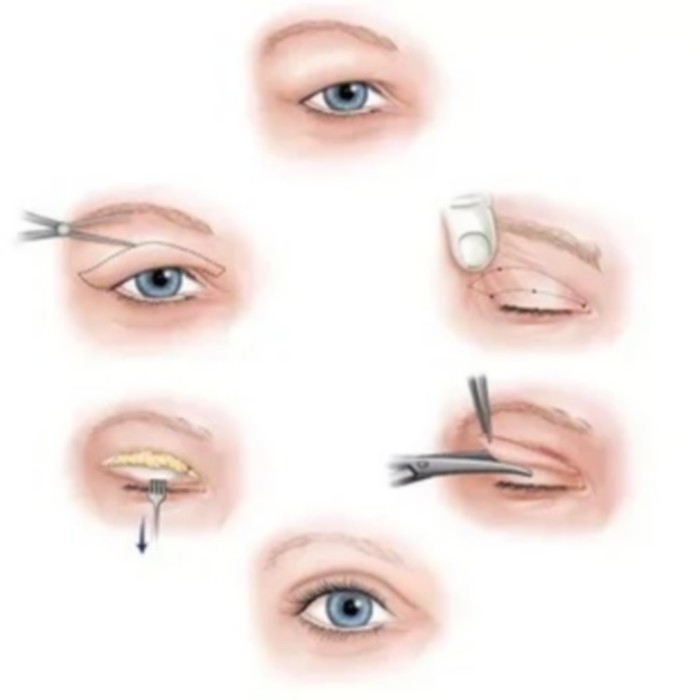
Surgical intervention: general characteristics
The minimum period of rehabilitation after plastic surgery is 3-4 weeks. Side effects maximum appear on the next day after surgery and within 10-14 days slowly disappear. They are mainly expressed in bruises, pain and swelling.
To reduce the recovery of the body and prevent the occurrence of more serious complications necessary to adhere to the general recommendations for the period after surgery. For example, it is recommended to refrain from visiting bathhouses and steam rooms, avoid swimming in open reservoirs and swimming pools, significantly reduce physical activity. In addition, you should regularly conduct antiseptic treatment of the stitches to prevent suppuration.
Another important point is the observance of contraindications to plastic surgery. Brow elevator and forehead is not conducted in diseases of the heart and circulatory system, high blood pressure, cancer, viral diseases and high body temperature.
The cost of average plastic surgery starts at 6000 dollar and is determined by its type of performance, the type of anesthesia, and a number of other additional services. The effect of its performance lasts, as a rule, for up to 10 years.
Brow and forehead lift is performed to eliminate ptosis and wrinkles in the designated area. Depending on the severity of the aesthetic defects, a specific method of lifting is chosen: plastic surgery, thread lift, apparatus exposure or injections.
Thread brow lift: can it be a substitute for plastic surgery?
Plastic surgery has been replaced by technology that allows you to achieve lasting results with minimal trauma to the skin. Facelift with threads is a gentle way to restore shape, get rid of wrinkles and deep creases. With the help of micro incisions, the thinnest threads of biological materials are introduced under the skin. A new skeleton is created through a specific insertion pattern. A short recovery period and long term effect are the main advantages of this cosmetic method. The procedure is prescribed for pronounced age-related changes, for correction of specific areas, for example, thread lifting of eyebrows or the entire oval, is also used for the neck and décolleté areas.
Thread brow lift can be performed under general or local anesthesia. The method is determined by the doctor on an individual basis. Sutures are implanted under the skin and due to their fixation they provide a visible brow lift and smoothing of deep creases in the forehead area. Thanks to aesthetic manipulations, the entire face is changed, becoming more expressive, open, by restoring the brow line. You can get rid of a heavy, tired look, which appears in the gravitational type of aging by 35-40 years.
Lifting the forehead and eyebrows involves maintaining the mobility of facial expressions – there is no unnatural, frozen mask as a result. The wings of the arches are lifted and the upper eyelids are lifted at the same time. Horizontal forehead creases are smoothed out, as well as wrinkles under the eyes. Using a fine needle, the doctor guides the threads into the desired areas. With the help of incisions, the material is fixed, smoothing out the skin. The invasive method is widely used to correct the eyelids, when there is a displacement of the eyebrow line, it can replace blepharoplasty.
Thread lift procedure
Before the lift, it is important to gather complete information about the clinic where the lifting will be performed. You should also inquire about the qualifications of the doctor, preferably a plastic surgeon. At the request of the patient, the doctor must provide certificates for the materials used. Open the package must be in the presence of the client, after printing the material can not be stored under any conditions.
Thread lifting, like any lift, requires a certain amount of preparation. The cosmetic surgeon begins with a consultation: details about the technique, the material used and provide certificates for it, how many threads will need.
The specialist will review the client’s medical history, asking about diseases, allergic reactions, if he had any operations, what cosmetic procedures he had. In some cases, it may be necessary to undergo additional tests – this is necessary to prevent unwanted consequences and predict the rehabilitation period.
After examining the condition of the area where the threads will be implanted, their type, amount and scheme of introduction are determined on an individual basis.
There are two kinds of threads:
• biodegradable – resorbable. They are made of a copolymer of L-lactide and e-caprolactone. This material is friendly to the human body and is an activator of collagen production, restoring youthfulness of the skin at the cellular level. The threads remain in the tissues for more than a year and then, when resorbed, are excreted naturally. But the rejuvenating mechanism started by it continues to work further;
• Non-absorbable. They are made of a synthetic material polypropylene, which has been used in surgery for almost half a century. Such sutures have long been tested, are safe, are not rejected by the body and help to get a long-lasting effect.
It is important to know: a specialist who conducts the procedure of thread lifting, must be qualified as a cosmetologist and have a certificate confirming training in the company “Aptos”. You should apply only to well-established clinics with certified specialists who have the appropriate knowledge and experience.
Steps of the procedure
Thread lifting, like any lift, requires a certain amount of preparation. The cosmetic surgeon begins with a consultation: details about the technique, the material used and provide certificates for it, how many threads will need.
The specialist will review the client’s medical history, asking about diseases, allergic reactions, if he had any operations, what cosmetic procedures he had. In some cases, it may be necessary to undergo additional tests – this is necessary to prevent unwanted consequences and predict the rehabilitation period.
After examining the condition of the area where the threads will be implanted, their type, amount and scheme of introduction are determined on an individual basis.
Additional measures
Three days before the thread lifting procedure, thread implantation is required:
• refrain from taking vasodilators, painkillers, and alcohol
• Do not go to a solarium, sauna, or swimming pool;
• Do not actively participate in sports.
One day before the procedure, exclude any foodstuffs that provoke edema.
On the day of the event, 2 hours before the procedure, you should not smoke, as nicotine promotes vasospasm and reduces the access of oxygen to the body.
Basic stage of thread surgery
First of all, the doctor takes pictures of the patient in five projections for later comparison with the results of the thread technology.
The following is a step-by-step process:
1. The patient’s hair is removed under a cap and the skin is cleaned of cosmetics and other impurities. Then treat thoroughly with an antiseptic solution (betadine, chlorhexidine, etc.) to disinfect the skin.
2. now it comes to anesthesia. Cream with lidocaine or ultracaine solution is used, for long term anesthesia.
3. The doctor draws with a marker the points where the threads will be inserted.
4. The package of sutures is opened. This is done in front of the patient.
5. Sutures are implanted with a microscopic needle puncture – it is introduced under the skin to a depth of 2 – 3 mm and is removed through another puncture.
6. The thread is stretched to fix the tissue with notches.
7. Needles are removed from the skin, puncture sites are inspected, and cooling bags are applied to them.
8. After some time, the skin is treated again with antiseptics.
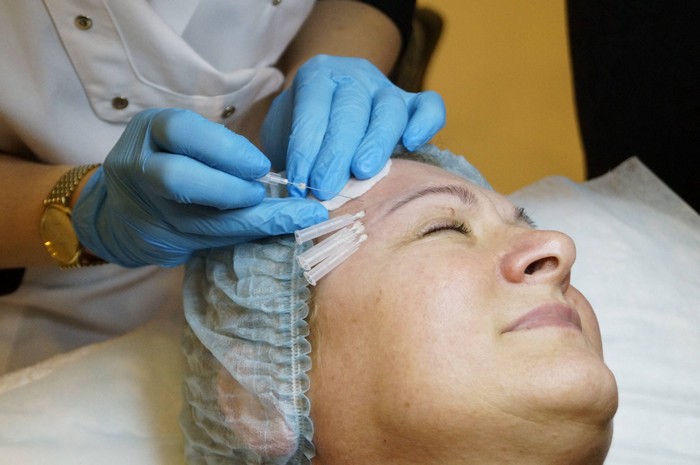
Recovery period
A few days after thread insertion, slight bruising and swelling and a tingling sensation may persist on the skin at the top of the face. When these symptoms disappear, it will be a sign of healing.
It should be understood that the connective tissue – the collagen framework, is formed 56 days, but the initial result of the elevator will be visible after three weeks. Within six months, it will accrue and last for a year to two or more years.
During the first three days after the procedure, you can not touch the face with your hands, use cream and powder.
It is very important to properly hygienize the face during the healing period. You can not wet the place, and you can use antiseptic solutions – 0.05% solution of chlorhexidine bigluconate). It is necessary to wipe the skin twice a day.
In addition, the following recommendations should be followed:
• Limit active facial expressions;
• sleep on your back;
• Apply an elastic bandage at night;
• avoid hot food, drinks for 3-5 days after the procedure;
• not to be in the sun for one month after the procedure;
• Do not go to the dentist for 1 month;
• Do not exercise for 2 to 3 weeks;
• Do not go to the pool, sauna, bath, beach;
• Refrain from drinking alcohol and smoking for 14 days after the thread lifting;
• Do not massage within 1 month after the procedure.
It takes just a little patience, and a fresh look, smooth forehead, beautifully contoured eyebrows, open look for a long time will be the reward!
